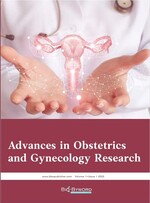Abstract
Background: Pelvic organ prolapse (POP) is a common pathology affecting up to 60% of women. Transvaginal high uterosacral ligament suspension (HUSLS) is an alternative treatment for apical prolapse. HUSLS has short operative and recovery time, as well as low complication rate. Objective: To evaluate the objective and subjective success rates in patients with apical prolapse who underwent HUSLS at Quilpué Hospital over a 24-month follow-up. Materials: A retrospective, observational, descriptive study was carried out, and all symptomatic patients with apical prolapse ? stage 2 POP-Q classification who underwent HUSLS between September 2014 and October 2019 were included in the study. Data were obtained from the database of the Urogynecology Unit of Quilpué Hospital, after approval by the ethics committee. Objective success was defined as C-point at 1 cm above the hymen, while subjective success was defined as “better” or “much better” in the Patient Global Impression of Improvement (PGI-I) scale and/or a visual analog scale (VAS) greater than 80% at 24 months of follow-up. Results: Of the 46 patients included in the study, the objective success rate was 84%, while the subjective success rate was 70%. Conclusion: Transvaginal HUSLS with permanent sutures is an excellent alternative treatment for apical prolapse, with a success rate similar to the gold standard at 24 months follow-up.
References
Jelovsek JE, 2020, Pelvic Organ Prolapse in Women Choosing a Primary Surgical Procedure, UpToDate, viewed in 2020, https://www.uptodate.com/contents/pelvic-organ-prolapse-in-women-choosing-a-primary-surgical-procedure
Olsen AL, Smith VJ, Bergstrom JO, et al., 1997, Epidemiology of Surgery Managed Pelvic Organ Prolapse and Urinary Incontinence. Obstet Gynecol, 89: 501–506.
Løwenstein E, Ottesen B, Gimbel H, 2015, Incidence and Lifetime Risk of Pelvic Organ Prolapse Surgery in Denmark from 1977 to 2009. Int Urogynecol J, 26: 49–55.
Boyles SH, Weber AM, Meyn L, 2003, Procedures for Pelvic Organ Prolapse in the United States 1979–1997. Am J Obstet Gynecol, 189: 70–75.
Luber KM, Boero S, Choe JY, 2001, The Demographics of Pelvic Floor Disorders: Current Observations and Future Projections. Am J Obstet Gynecol, 189: 1496–1501.
The American College of Obstetrics and Gynecologists, 2019, Pelvic Organ Prolapse. Female Pelvic Med Reconstr Surg, 25(6): 397–408.
Maher C, Feiner B, Baessler K, et al., 2013, Tratamiento Quirúrgico del Prolapso de Órganos Pélvicos en Mujeres [Surgical Treatment of Pelvic Organ Prolapse in Women]. Cochrane Database Syst Rev, 2013(4): CD004014.
Moalli PA, Ivy SJ, Meyn LA, et al., 2003, Risk Factors Associated with Pelvic Floor Disorders in Women Undergoing Surgical Repair. Obstet Gynecol, 101: 869–874.
DeLancey JO, 1992, Anatomic Aspects of Vaginal Eversion After Hysterectomy. Am J Obstet Gynecol, 166: 1717–1724.
Shull BL, Bachofen C, Coates KW, et al., 2000, A Transvaginal Approach to Repair of Apical and Other Associated Sites of Pelvic Organ Prolapse with Uterosacral Ligaments. Am J Obstet Gynecol, 183: 1365–1373.
Rondini C, Braun H, Alvarez J, et al., 2015, High Uterosacral Vault Suspension Vs Sacrocolpopexy for Treating Apical Defects: A Randomized Controlled Trial with Twelve Months Follow-Up. Int Urogynecol J, 26(8): 1131–1138.
Busquets M, Castillo F, 2009, Uso del Sistema POPQ para la Clasificación Delos Prolapsos: Hospital Parroquial de San Bernardo [Use of the POPQ system for prolapses classification: Hospital Parroquial de San Bernardo. Rev Chil Obstet Ginecol, 74(1): 4–10.
Meister MR, Sutcliffe S, Lowder JL, 2017, Definitions of Apical Vaginal Supportless: A Systematic Review. Am J Obstet Gynecol, 216(3): 232.e1–232.e14.
Alas AN, Anger JT, 2015, Management of Apical Pelvic Organ Prolapse. Curr Urol Rep, 16(5): 33.
Maher C, Feiner B, Baessler K, et al., 2016, Surgery for Women with Apical Vaginal Prolapse. Cochrane Database Syst Rev, 10(10): CD012376.
Yoon SH, Kim SN, Shim SH, et al., 2016, Bilateral Salpingectomy Can Reduce the Risk of Ovarian Cancer in the General Population: A Meta-Analysis. Eur J Cancer, 55: 38–46.
Diwadkar GB, Barber MD, Feiner B, et al., 2009, Complication and Reoperation Rates After Apical Vaginal Prolapse Surgical Repair: A Systematic Review. Obstet Gynecol, 113: 367–73.
Cheon C, Maher C, 2013, Economics of Pelvic Organ Prolapse Surgery. Int Urogynecol J, 24(11): 1873–1876.
